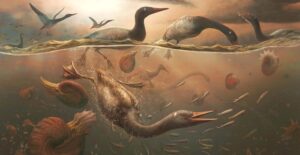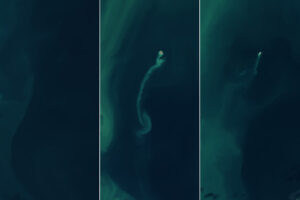We think of the Middle Ages as a time before science, dominated by religion. However, the era also inspired some of the world’s loveliest and most mysterious manuscripts. The 12th-century literary genre of bestiaries is one of them.

A Unicorn in the Oxford Ashmole 1511. Photo: Oxford Bodleian Library
A bestiary, or “book of beasts”, is a compendium of both real and imaginary animals. These Christian manuscripts, typically made of parchment or vellum, featured elaborate images of animals. The adjoining text described the creatures’ appearances and allegorical roles.
These bestiaries reflected the period’s belief that nature was a “book” to be read. Animals were not just God’s creations with their own qualities. They also served as allegories. Bestiaries allowed humans to learn from these animals, which carried either virtuous or evil connotations. While bestiaries served as religious instruction, some people read them simply for leisure.
Inspirations
Some texts that inspired the bestiary came centuries earlier. One of the main ones was a 2nd or 3rd-century AD manuscript called Physiologus. Written by an unknown author, it described the appearances of 50 different creatures and their moral symbolism. It also included plants and rocks. Animal, plant, and stone each has its own section in which descriptions, biblical passages, and allegorical interpretations are laid out. Some examples include, “On the Siren and Onocentaur”, “On the Aspidoceleon” and “On the Unicorn”. Clearly, the beasts could be mythical as well as real.
Bestiaries also built upon Isidore of Seville’s Etymologies. This was a 7th-century AD encyclopedia that included not only animals but also reading, grammar, arithmetic, medicine, astronomy, religion, geography, and many other disciplines. Physiologus and the bestiaries were also based on one of the world’s first natural history books, Naturalis Historia, published in 77 AD.
How they were made
Bestiaries from the 12th century became the most popular version of the genre. The images were drawn with ink and various kinds of metal leaf. Artists also used paint pigments from plants, rocks, or soil.
This process made the texts quite bright — illuminated. They exuded luxury. The images reflected real animals like lions as well as fantastical beasts of Greek and Roman mythology like griffins and sirens. The text was in French and Latin, as customary at the time. All bestiaries were done by hand.

Hedgehogs go to their holes in the Rochester Bestiary. Photo: British Library
Some famous bestiaries include the Oxford Ashmole 1511, Aberdeen Bestiary, Rochester Bestiary, and Harley Bestiary. They reside in the Bodleian, Aberdeen University, and British Libraries respectively. Historians grouped the manuscripts into “families”, based on their language. Over 50 manuscripts have survived to the present day.
People in the Middle Ages saw the natural world in a very profound way. Naturalists thought that lionesses gave birth to still-born cubs and breathed life into them three days later. This prompted religious comparisons with Jesus Christ’s death and Resurrection.
A famous interpretation of the unicorn states that a virgin could tame it by coaxing it into her lap. This symbolized the conception of Jesus Christ within the Virgin Mary. Described as vain and proud, mermaids warned people to remain humble and modest. Themes like repentance and chastity also came up.
Class played a big role in its development. The highly detailed and illuminated images overwhelmed the text beside it. Since the majority of the population could not read, the artist tried to convey the overall message through the image. Those in the upper echelons of society often bought and collected bestiaries. King Henry VIII was one of a long line of owners of the Aberdeen Bestiary.
Medieval worldview
While bestiaries were hardly accurate from a modern perspective, natural historians of the time often referred to them. They influenced how people saw nature and by extension, the world at that time. Imaginary and mythical creatures came onto the scene in part to fill in knowledge about distant lands.
Bestiary images became so popular that they appeared beyond manuscripts. Mosaics, church and monastery walls, and tapestries all featured similar renderings. The enthralling idea of a “book of beasts” inspired some modern creators to advance their own versions. The Book of Imaginary Beings by Jose Luis Borges and Michael Largo’s The Big Bad Book of Beasts are two examples. The unknown continues to lure us to this day, despite developments in zoology.
Can you buy an original bestiary?
Yes, as long as your budget can handle prices of $500,000 and up. As usual, the price depends on age, rarity, and provenance. Auction houses like Christie’s and Sotheby’s have sold bestiaries from monasteries throughout Europe. Some private collectors regularly acquire medieval manuscripts. Luckily, many remain available to the public in museums and university libraries.






